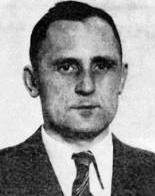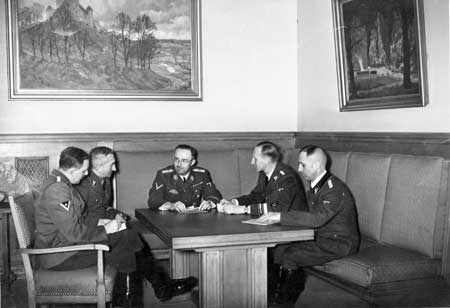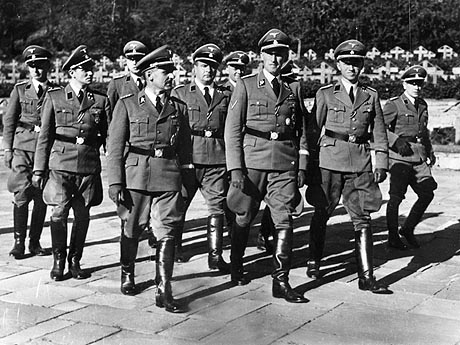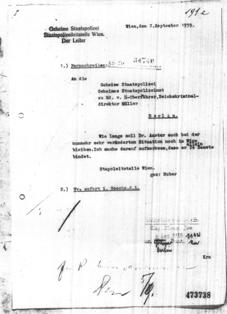Holocaust Education & Archive Research Team |
|
Holocaust Prelude Early Nazi Leaders Nazi Propaganda Nazi Racial Laws Sinti & Roma Kristallnacht The SS SS Leadership Wannsee
Prelude Articles Image Galleries | ||||
Heinrich Müller
Heinrich Müller was Head of the Gestapo during World War Two and Adolf Eichmann’s immediate superior, responsible for implementing the “Final Solution”. Müller was politically suspect to influential members of the Party, who resented his past record in the Munich State Police, when he had worked against the Nazis. Not until 1939 was he officially admitted to the NSDAP, yet the stubborn, self-opinionated Müller was highly regarded by both Himmler and Heydrich, who admired his professional competence, blind obedience and willingness to execute “delicate mission,” such as the elimination of leading generals, for example the Blomberg – Fritsch affair. He also excelled in spying on colleagues and despatching political adversaries without scruples, and the infamous “canned goods” fake attack on the radio station at Gleiwitz, that provided Hitler with the excuse to invade Poland, and thus plunge Europe into the Second World War.
Müller combined excessive zeal in his duties with docility towards his masters, the very model of a cold dispassionate police chief and bureaucratic fanatic, he earned the nickname “Gestapo- Müller.“. Müller was rapidly promoted by Heydrich to SS – Colonel in 1937, SS- Brigadier on 20 April 1939, SS- Major General on 14 December 1940, SS- Lieutenant and Police Chief on 9 November 1941.
In his hands mass murder became an automatic administrative procedure, Müller exhibited a similar streak in his treatment of Russian prisoners of war and gave the order to shoot British Officers who had escaped from detention at Sagan, near Breslau, at the end of March 1944.
-------------------------------------------------------------------------------------------------------------------------
Müller was last seen in the bunker on April 29, 1945, the day before Hitler's suicide. Hans Baur, Hitler's pilot, later quoted Müller as saying, "We know the Russian methods exactly. I haven't the faintest intention of being taken prisoner by the Russians." From that day onwards, no trace of him has ever been found. He is the most senior member of the Nazi regime about whose fate nothing is known. This has naturally given rise to decades of speculation. There are three possible explanations for his disappearance:
"Gestapo Chief: The 1948 Interrogation of Heinrich Müller" Gregory Douglas. San Jose, CA: R. James Bender, 1995
Copyright CW/CL H.E.A.R.T 2007
|





